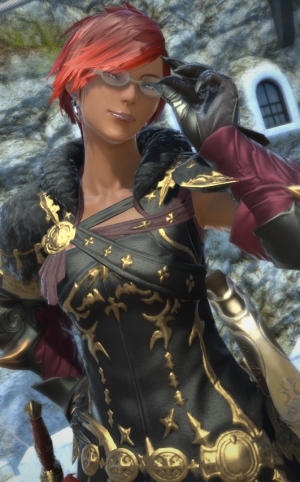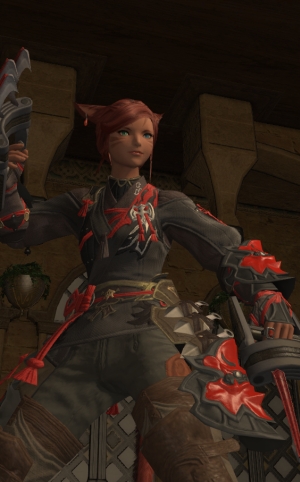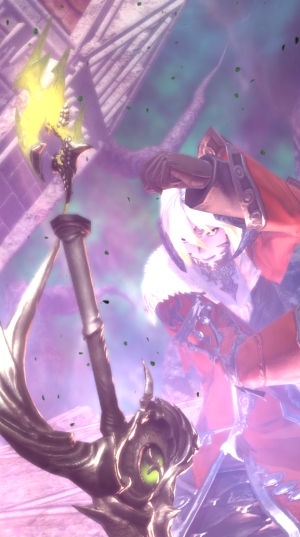
The biggest problem with job gauges in Final Fantasy XIV was always conceptual because there were two jobs built from the ground up to have gauges and 13 that had not been. That doesn’t mean they didn’t convey real and tangible improvements in the visual displays for the jobs or things already being tracked; I have little doubt, for example, that things like Dragoon’s Blood of the Dragon and Black Mage’s Enochian were part of the concept process. It just means that the job gauges were something included later to functionality.
For consistency’s sake, of course, every job got a gauge and thus they could all work more or less the same. But there’s a world of difference between the jobs with integral gauges and ones that have had gauges added very much as an afterthought. So let’s talk about all of the gauges in the game, from the good to the utterly pointless.
 Also worth noting as that this is about the mechanics of the gauges themselves, not the jobs as a whole. There are jobs with good gauges and poor performance and vice versa; this isn’t about that in the least, just what the gauge adds (or doesn’t) to the job.
Also worth noting as that this is about the mechanics of the gauges themselves, not the jobs as a whole. There are jobs with good gauges and poor performance and vice versa; this isn’t about that in the least, just what the gauge adds (or doesn’t) to the job.
Paladin
The Oath Gauge is not, thankfully, totally useless; just nearly. The method of raising the gauge actually works pretty well, split between Shield and Sword Oath and incentivizing different things with both. Unfortunately, the problem is that it really stops being interesting there, as there are only two options to spend it, one of which is always the right pick depending on whether you are tanking or not, and no real pressure to keep it higher or not spam abilities when they become available.
Warrior
The Beast Gauge is really just a refinement of the existing system that was in place for Warrior, so it works more or less identically; it actually gives some added flexibility when using the many abilities keyed into your gauge. Between having plenty of abilities using it and some actual benefit as it builds, it’s pretty much in an ideal spot.
Dark Knight
Sort of in an awkward middle ground compared to the other two gauges, Blackblood is always just triggered off of certain abilities and rotations but does have a useful mixture of different tricks for spending it. It also changes its generation profile a lot once you reach level 70 and get Blackest Night. Mediocre on a whole, but it smacks less of being a limp retrofit than, say, the Oath Gauge.
White Mage
Lilies are utterly worthless. They trigger predictably, don’t key into anything interesting, don’t have any advantage to getting built up, and actually don’t play nicely with Divine Benison at this point. All they really do is mean that you want to Cure a few times before using cooldown abilities, something that mostly amounts to some extra chores in larger content and is pretty pointless in most content.
Scholar
Use Aetherflow and you will be able to turn your fairy into a Regen effect! Wow. Another pretty pointless one, since you already have enough things in your scholar toolkit to incentivize using Aetherflow and the lone ability keyed into the gauge is kind of underwhelming. Ask yourself if you’d even notice if the ability keyed into it changed to a flat cooldown.
Astrologian
This gauge is only partway a gauge; it’s just a better visual display of the card shuffling that Astrologian already was taking care of, which quite frankly is exactly what it needs to be. So it works great for what it is.
 Monk
Monk
Much like Astrologian, this gauge is basically doing a job already done through other means but slightly more efficiently. It’s nice that Monk had the mechanics in place already, but as Monk hasn’t significantly evolved since level 50 it’s a touch underwhelming. (Not that Monks are horribly lagging in the process, mind you; they’re a bit behind other options but still viable. They just play more or less the same.)
Dragoon
Here’s another example of an existing mechanic retrofitted into a gauge… but with another mechanic added on top of that retrofit that makes for a better overall experience. The net result is a gauge that does its job very well and displays information in a useful and concise fashion while taking advantage of the gauge to build new gameplay mechanics.
Ninja
Ninki is easily one of the blandest gauges, building like the Oath Gauge but without the change in stances. It doesn’t really add anything to the job aside from a reason to use Mug at the right time, something that… was already sort of there. Again, if you just tossed the abilities on a cooldown (which two of them already are), you wouldn’t really notice the difference.
Samurai
One of the two jobs built around the job gauge, the Kenki gauge is actually reasonably useful in giving the job lots of additional DPS options with varying uses. Similarly, the three symbols work much better on a gauge than just via tracking buffs, so it makes full use of the system. That’s good.
Black Mage
To a certain extent this, too, is a gauge just codifying what had otherwise been expressed via buff-tracking; however, it gets an edge due to the addition of Foul and the accompanying “clock” aspect. So it’s a useful expansion of how things already worked, to its credit. I don’t know if the way Foul unlocks could really have been built without the gauge, either.
 Summoner
Summoner
I actually really like this gauge just from a visual design standpoint, but also because it effectively conveys the difference between what you might expect in terms of Aetherflow usage and what is actually happening. The fact that parts get locked away depending on your state really does help send a firm message about what you’re supposed to be doing, and I suspect this was another job with more complex mechanics built up thanks to the presence of gauges.
Red Mage
Oh yes, this one also was built around the gauge, and it wouldn’t quite work without it. In contrast to most of the other gauges, though, this one isn’t really using its gauge as a resource, which I like; your abilities never cost mana gauge alone, just in enhanced versions. I’d love to see more of this spread to other jobs.
Bard
Eh… it’s functional, yes, but it doesn’t really add a whole lot other than a buff timer in visual format. That visual format definitely helps and plays on that musical aspect the job has, but it feels more like something that’s been made to work with the gauge structure than something requiring it a la Red Mage or Dragoon.
Machinist
The addition of the heat gauge is a great improvement because it’s another thing you really can’t do without the gauge format (and it also doesn’t just cost heat, something I mentioned liking with Red Mage). The bullet counter, too, is more readable than when it was just stacks of a buff. So it’s a good way to mark and provide information at a glance.
To summarize? Most of the gauges that are really good are ones where I feel the gauge format isn’t just “tracking mechanics you already had,” while the worst ones are places where the mechanics have clearly been added to justify the gauge. I doubt that most of the gauges will go away in the next expansion (that’s not how this game works, after all), but I suspect that some of those will be altered and improved upon. Or at least, I hope so.
Feedback, as always, is welcome in the comments or via mail to eliot@massivelyop.com. Next week, let’s talk a little bit about storyline overload and whether or not we’ve had too many plots in Stormblood or just the right number.
 The Nymian civilization hosted an immense amount of knowledge and learning, but so much of it has been lost to the people of Eorzea. That doesn’t stop Eliot Lefebvre from scrutinizing Final Fantasy XIV each week in Wisdom of Nym, hosting guides, discussion, and opinions without so much as a trace of rancor.
The Nymian civilization hosted an immense amount of knowledge and learning, but so much of it has been lost to the people of Eorzea. That doesn’t stop Eliot Lefebvre from scrutinizing Final Fantasy XIV each week in Wisdom of Nym, hosting guides, discussion, and opinions without so much as a trace of rancor.














